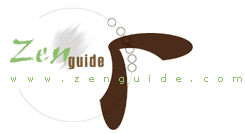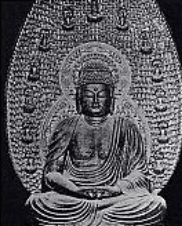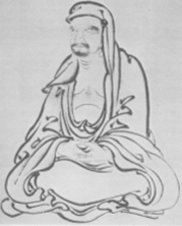 |
|
.
e
.
n
 |
 |
 |
 |
 |
 |
 |
 |
 |
 |
 |
 |
 |
 |
|
STORIES, BOOKS & MEDIA
» koans, stories & words » zen readings » recommended books » book reviews » art & prints » audio, videos, DVD's ZAZEN MEDITATION GUIDE - Chapter 2. Purposes in Zazen In his "Zen Fables for Today", Richards McLean retells the following story: "Why must I meditate in order to achieve enlightenment?" demanded the prince of the teacher. "I can study, I can pray. I can think on issues clearly. Why this silly emptying of mind?" This simple story is telling us the purpose and the way of zazen very clearly. To practice "Zazen" is to see into one's "own nature" or Buddha-nature, which is from the very beginning, pure and calm, and every being in the world has it. This is what the Buddha declared when he had just attained his Supreme Enlightenment and was recorded in the "Avatamsaka-sutra" (The Flower Ornament Scripture) and repeated in the "Mahaparinirvana-sutra". When you see into your own nature, you know who you are, you know what and how every thing and being in the world really is. From this, your action and reaction will be in harmony with the whole and in situations around you. I have some words for you that will help you avoid the following situation:
These words would be correct for anyone who already sees into his or her own nature, knows where it is, and what it looks like. If anyone who does not yet see into his or her own nature, does not know where it is, what it looks like, and cannot prove this through his or her own experience of awakening before a real Zen teacher, then he or she is not an enlightened one. They just speak about something borrowed from the Buddha or a Zen master, not of his or her own experience of enlightenment. This is considered the biggest type of zen-sickness. Words and experience are not in accordance. Recently, there are people who did not have any experience of enlightenment but often criticized others: "You are attaching to enlightenment!" or "You are clinging to detachment!" when they heard someone said something about enlightenment or detachment. This is even more ridiculous than the ones who thought that "I am already a Buddha" or "I am already enlightened," because they do not know what the true enlightenment is or what the real detachment is. This is also called a zen-sickness of words and action do not match each other. In case you really think you are an awakened one, test yourself with these questions: Master Yueh of Toushuai set up three barriers to question students: Your answers should come out directly and spontaneously from your kensho and need the approval of a real Zen teacher. If not so, you need to put yourself into zazen practice until you are able to do so. Sit yourself like the Buddha did for six years long in the forests and 49 days and nights under the Sala tree at Bodh-gaya. Sit yourself like Bodhidharma did facing to the blue rock-wall for nine years long at the Shao-lin Monastery in Sung-shan Mountain in China.
SUPPORT ZENGUIDE.COM Purchase posters, art prints, media (music CD & DVD)
 ZEN CIRCLE
ZEN CIRCLE
by Torei Enji →Puchase this Item →More Art Prints & Media →Zen & Buddhism books |
s
.
t
.
o
.
r
.
i
.
e
.
s
.
,
.
.
b
.
o
.
o
.
k
.
s
.
.
&
.
.
m
.
e
.
d
.
i
.
a
.

